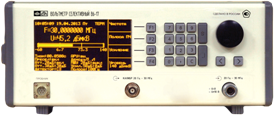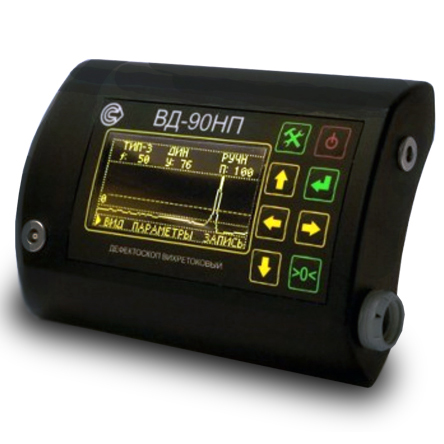Catalog
Search
1059 products
View:
- Selected: 1Applying
- Selected: 0Names
- Selected: 0Manufacturer
- Selected: 0Made in
- Selected: 0Additional
View:
1059 products
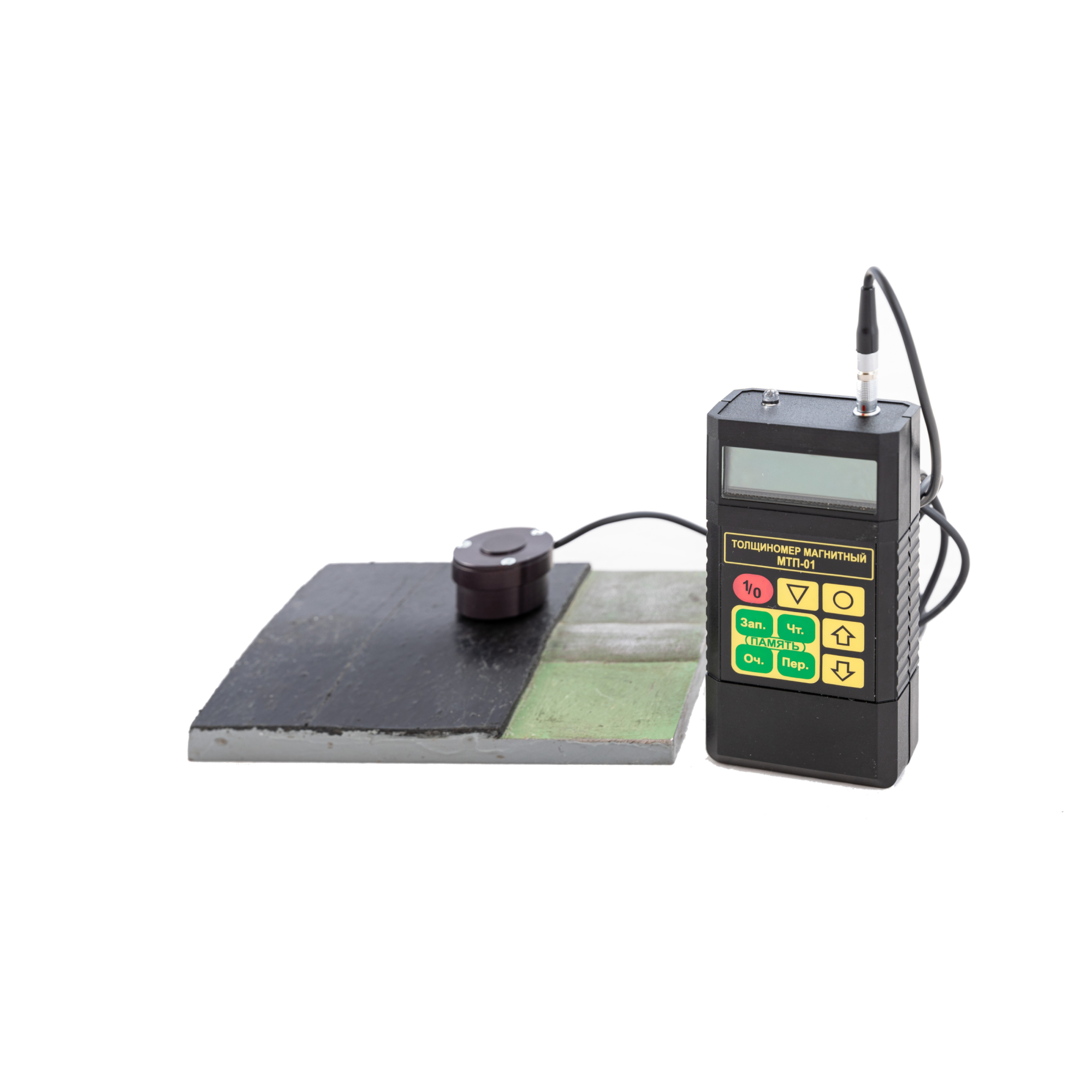
MTP-01 Magnetic Coating Thickness Gauge
from
75 000 ₽
Measuring range of thickness of protective coatings, mm: from 0.2 to 10
Digital display of measurement results: yes
Power supply: from a PP3 type
battery with a voltage of 9V
Power consumption, MW: 100
Operating mode setting time, min: 1
Time of one measurement, sec: 3
Memory capacity, number of thickness values: 2000
Overall dimensions, mm:
- electronic unit (width-depth length) 120x60x25
- measuring transducer (diameter height) 33x23
- connecting cable (length) 1500±300
Weight, g, no more:
- electronic unit (without battery power) 80
- measuring converter 40
The kit includes:
- Electronic unit,
- Measuring converter
- Plate made of non-magnetic material for setting the upper limit of measurements
- Battery type PP3
- CD-ROM with the program
- Prism
- Cover
- Spring
- Case
- Passport
- Operation Manual
RII MNPO SPEKTR
Moscow
Produced in: Moscow
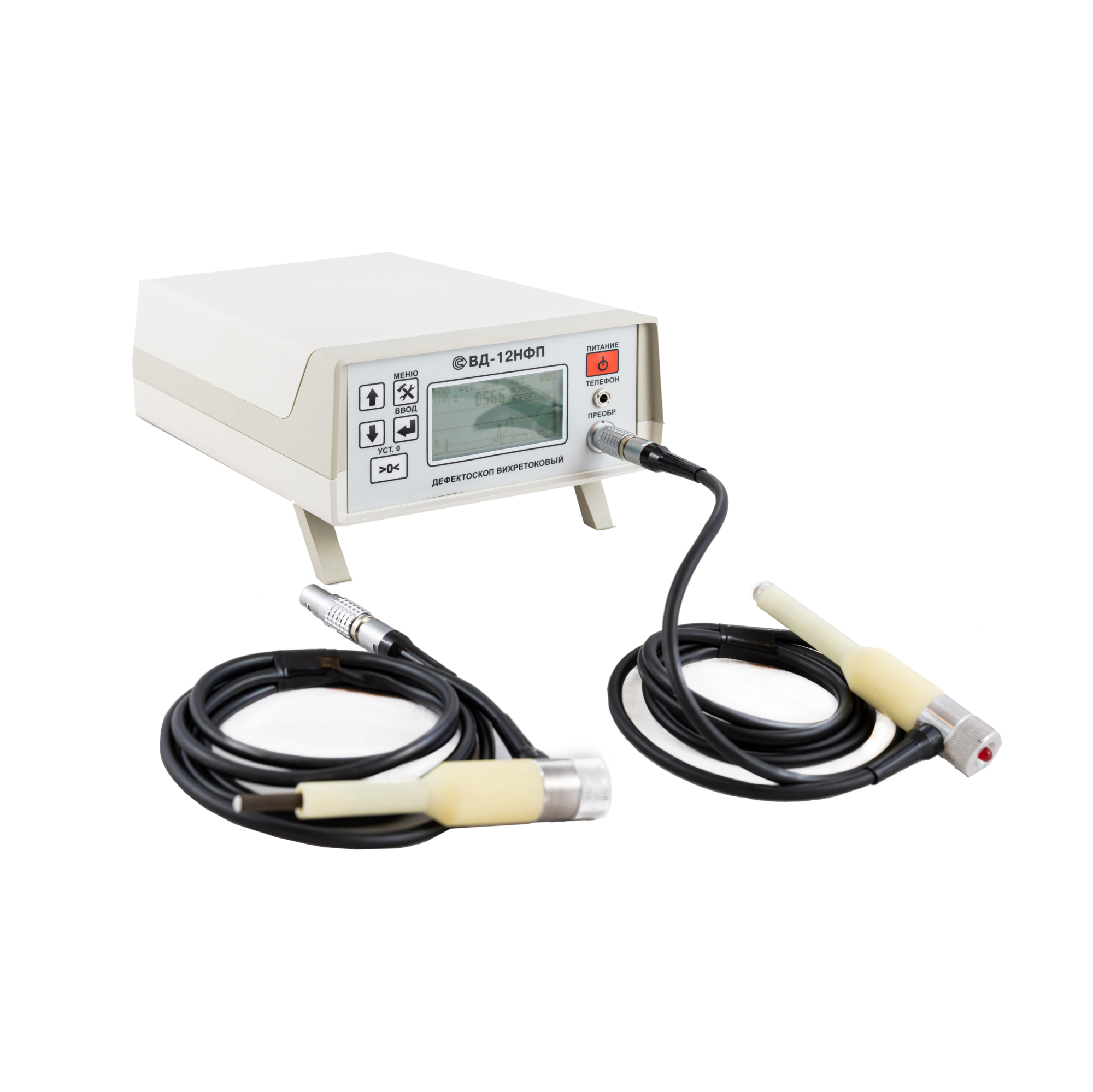
VD-12NFP Eddy Current Flaw Detector with 2 converters
from
254 000 ₽
The device allows you to detect surface defects like cracks, visualizing the signal from the continuity interruptions on the display. The design of the flaw detector allows to determine with high reliability the exact location and depth of defects even on rough surfaces of flat and curved shape, including under a layer of corrosion or in the presence of a protective coating of the controlled area of the product with a thickness of up to 3 mm.
The principle of operation of the VD-12NFP eddy current flaw detector:
The principle of operation of the VD-12NFP eddy current flaw detector is based on the phenomenon of electromagnetic induction. An alternating magnetic field created in the primary coil of the converter by means of a sinusoidal voltage generator excites eddy currents in the controlled product. A parasitic magnetic field formed by eddy currents at the locations of defects affects the measuring unit (two signal coils connected in series) of the converter, creating an electromotive force in it. The amplitude and phase of the secondary signal carries information about the properties of the defect and the position of the transducer relative to the surface of the controlled product. The output signal from the measuring unit of the converter, after amplification and processing using a microprocessor, is displayed on the readout of the device, and is also stored in the memory block for subsequent transmission to a personal computer. In addition, information about the defects is displayed on a piezoelectric bell used as an audio indicator.
Design, features and advantages of the VD-12NFP eddy current control device:
The VD-12NFP eddy current flaw detector is a portable device capable of working both in a desktop and in a suspended position in a special bag-case. This ensures convenient operation of the device in a variety of conditions: in the laboratory, in the factory shop or during field tests. The flaw detector consists of an electronic unit with controls and display of test results, as well as three replaceable converters with wear-resistant corundum tips connected to the electronic unit using a connector. The choice of the desired converter depends on the magnetic properties of the material. For the control of parts with grooves, a converter with an inclined tip is offered. The device is powered by 4 AA batteries located in the battery compartment of the electronic unit.
The advantages of the flaw detector include:
- a screen for visualizing the signal during measurement;
- light weight and compact dimensions that allow you to use the device in almost any conditions;
- the ability to control the quality of products of various curvature and surface roughness even in the presence of a protective coating or a layer of corrosion;
- wear resistance of converters, which is important when monitoring products with increased surface roughness (up to Rz£320);
- automatic detection of the type of converter when connected, as well as the presence of built-in memory for storing control results;
- the possibility to transfer data to a personal computer for storing or printing control protocols.
Scope of application:
Portability, high productivity, the ability to work with curved and rough surfaces, as well as the fact that the operation of the flaw detector is practically unaffected by humidity, pressure and contamination of the gas environment or the surface of the controlled product with non-conductive substances ensure the versatility of the device for detecting cracks in various materials.
The eddy current flaw detector VD-12NFP is actively used in heavy industry for diagnostics of metal structures, assemblies and mechanisms for various purposes in factory workshops or laboratories, including at enterprises of railway transport, automotive industry, mechanical engineering, pipelines and metal structures.
The VD-12NFP flaw detector can be used with equal success in the field, factory workshops, depots, laboratories and workshops to monitor the current condition, as well as to assess the degree of wear, the possibility and duration of further operation of such products made of metals and alloys as over-spring beams, wagon wheels, auto coupler housings, side frames, wheel couples and others.
Distinctive features:
• control of parts with surface roughness up to Rz320 due to wear-resistant corundum tips;
• assessment of the degree of danger (depth) of the defect;
• automatic detection of the converter type;
• microprocessor control;
• 5 universal programs for saving settings;
• capable of detecting defects with a depth of 0.3 mm
• The angle of deviation of the converter from the normal to the working surface up to 60°
• Operating frequency of 70 kHz;
• Maximum working clearance of 3mm;
• visualization of the signal from the defect;
• built-in memory for storing control results
• Equipped with a Bluetooth 2.0 wireless communication module, which allows you to transmit control results and control the flaw detector at a distance of up to 20m;
• The possibility of forming a control protocol based on the data transmitted to the PC;
• Temperature range from 0°C to +40°C;
• The design allows you to work with the flaw detector without removing it from the bag-case.
Basic kit:
Ia5.173.016: 1 electronic unit
Ia5.125.031: 1 converter, type 1; marked as (•)
Ia5.125.030: 1 converter, type 2; marked as (••)
Ia2.706.002: the KOIDZ-VD set of samples with a passport (consisting of:
Ia8.896.034: 1 piece;
Ia8.896.035: 1 piece;
Ia8.896.035-01: 1 piece) - A certificate of verification.
4 AA batteries
1 charger
1 small-sized phone
1 CD with software
1 special key
1 bag-case
A calibration certificate is issued for the VD-12NFP flaw detector.
1 passport
1 operating manual
1 calibration instruction
RII MNPO SPEKTR
Moscow
Produced in: Moscow
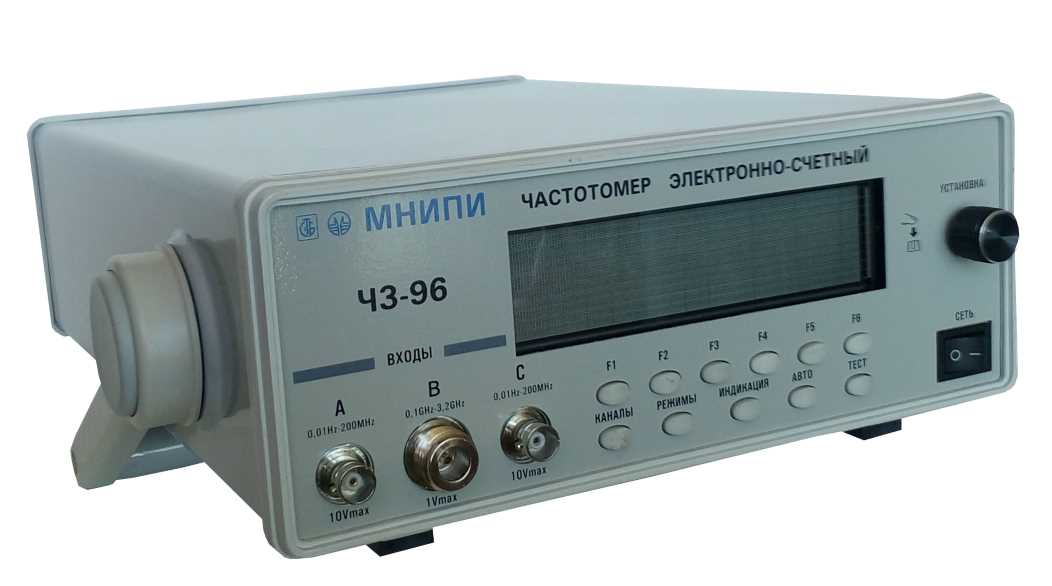
Picoammeter A2-4
System meter of small currents. The device allows to make measurements in almost the entire range of currents. The picoammeter is characterized by high performance, which is important for its use as part of automated measuring systems.
Technical specifications:
Current measuring range 1x10-14 - 1x10-2 A
Error for the range 10-11, 10-10 ±[0.5+0.025(lk/lx-1)]%
for the range 10-9, 10-8 ±[0.25+0.01(lk/lx-1)]%
for the range 10-7, 10-6,10-5, 10-4,10-3, 10-2 ±[0,1+0,01( lk/lx-1)]%
The time of setting the readings is 2x10-2 - 2x10-5 s
Supply voltage 230 (±20) V, frequency 50 (± 0.5) Hz
Power consumption 10 VA
Overall dimensions (HxWxD) 105x284x366 mm
Weight 3.5 kg
Operating temperature 5 - 40 °C
Humidity 80% at 25 °C
MNIPI
Minsk
Produced in: Belarus, Minsk

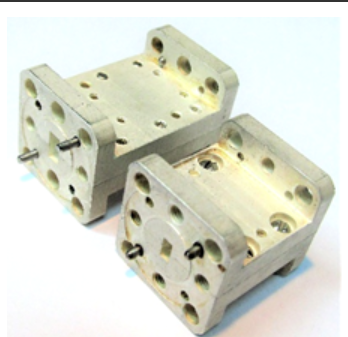
FNCH-53
These LFS can be used in conjunction with waveguide bandpass filters to increase the suppression of spurious signals and expand the upper band of the barrier.
Basic properties
Low bandwidth losses;
A wide barrage strip.
Operating conditions
Operating temperature range from minus 10
up to 50 ° C;
The relative humidity of the air is up to 98% at a temperature of 25 ° C.
Technical specifications
Waveguide cross section, mm 5.2×2.6
Bandwidth Fh-Fb at the level of -1 dB, GHz 45-53.6
The barrage band at the level of -30 dB, GHz 60-78
Bandwidth loss, 0.5-1.0 dB
TEKHNOYAKS
Moscow
Produced in: Moscow
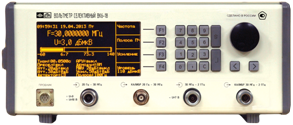
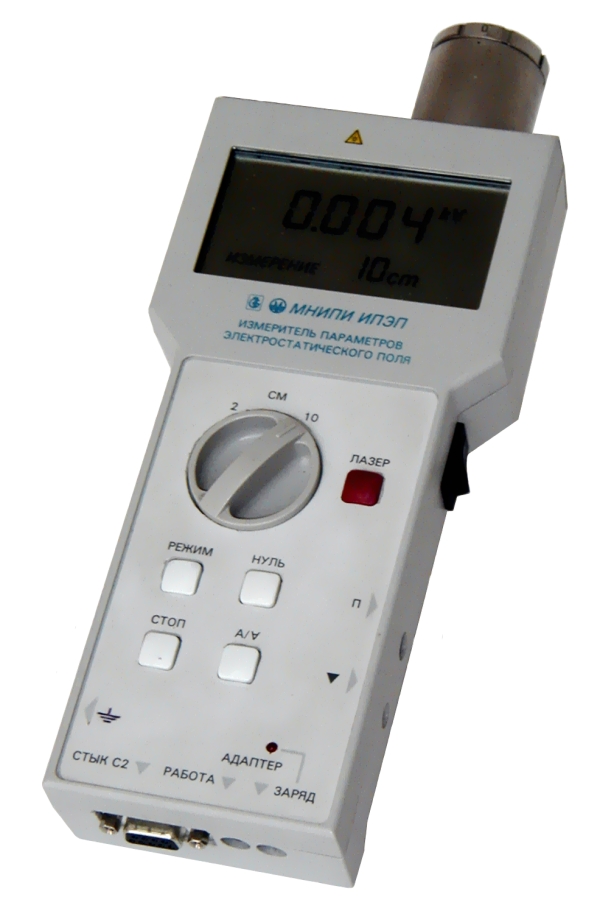
IPEP-1 Electrostatic Field Parameter Meter
Designed to measure the potentials of electrostatically charged objects, the strength of the electrostatic field and the surface density of electric charges.
Technical specifications:
Measuring range 0.02-50 kV
The error is 5-10%
The intensity of the electrostatic field
Measuring range 2-1000 kV/m
Error 5%
Surface density of electric charges
Measuring range 0.02-10 µcl/m2
Error 5%
Measurement of the electrostatic field strength (2-1000 kV/m)
Measurement of the potential of charged objects (0.02–50 kV)
Measurement of surface charge density (2x10-8–1x10-5Kl/m2)
Measurement error ±(5-10) %
Laser pointer of the distance to the object (2, 10 cm)
3.5-digit indicator (LCD with image flip)
RS-232C interface
Dimensions, weight 40x106x268 mm, 0.7 kg
Built-in battery for 8 hours of operation
Power supply: ~220, 5 VA, 4.5–5.5 VA battery
MNIPI
Minsk
Produced in: Belarus, Minsk
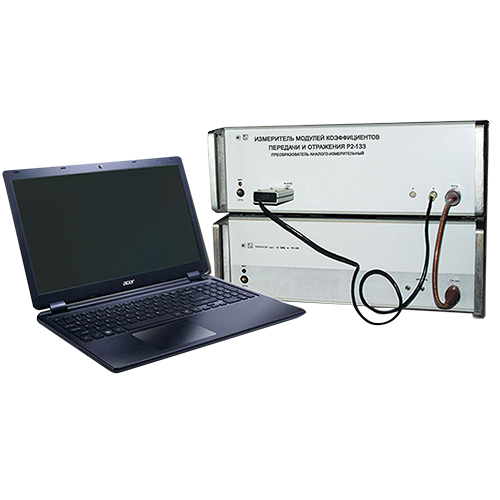
Measuring modules of transmission and reflection coefficients P2-133
NNPO im. M.V.Frunze
Nizhny Novgorod
Produced in: Nizhny Novgorod
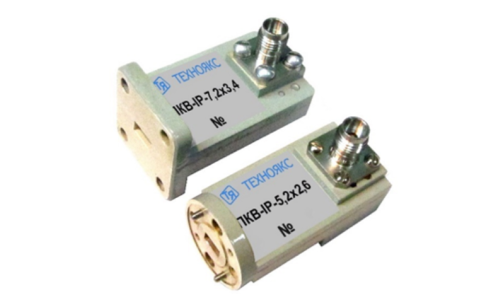
PKV-IP-5,2×2,6
Basic properties
Wide frequency range;
Small VSWR values.
Operating conditions
Operating temperature range from minus 10 to 50 ° C;
The relative humidity of the air is up to 98% at a temperature of 25 ° C.
Technical specifications
Waveguide cross section, mm 5.2×2.6
Type of coaxial connector (according to GOST RV 51914-2002) IP
Frequency range, GHz 37.50-50.00
VSWR 1.45
TEKHNOYAKS
Moscow
Produced in: Moscow
Oscilloscope S1-176
It is intended for the study of periodic electrical signals by visual observation and measurement of their amplitude and time parameters on the scale of the CRT screen in the frequency band 0-50 MHz, as well as for monitoring the parameters of two- and three-pole devices using a component tester.
Technical specifications:
Number of channels 2
Bandwidth 0 - 50 MHz
Deviation coefficients of 2 mV/div - 20 V/div (step1-2-5)
Installation error ± 3%, ± 4% with a 1:10 divider
Rise time of PH <= 7 nsec
Input impedance is 1 mOhm/25 pF, with a divider of 1:10 - 10 mOhm/23 pF
Harsh operating conditions (-10°C to +40°C)
Bandwidth 0 - 50 MHz
Two channels
Indication of deviation and sweep coefficients on LED matrices
Tenfold stretching of the sweep
Calibrator 0.6 V, 1 kHz (± 1%)
X-Y mode
Built-in Component Tester
Screen 80x100 mm
Weight 6,8 kg
MNIPI
Minsk
Produced in: Belarus, Minsk
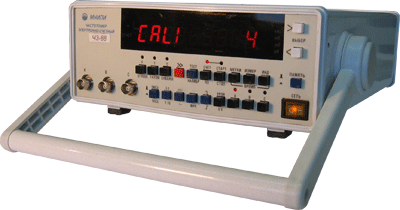
Frequency meters H3-88
Designed for measuring the frequency and period of sinusoidal and pulse signals, measuring pulse duration, time intervals, pulse duty cycle, frequency ratio of electrical signals, counting the number of pulses, output of reference frequency signals.
Technical specifications:
Input to (sinusoidal signal) - range 100 - 2500 MHz
Input A, C (sine, pulse) - range 0.01 - 200 MHz
Counting time: input A, C – 1, 10, 102, 103, 104 ms; login to – (16•1), (16•10), (16•102), (16•103), (16•104) ms
The number of averages. the period of the. vx. signal - 1, 10, 102, 103, 104
Timestamp period – 10-7, 10-6, 10-5, 10-4, 10-3
Borehole measurement at inputs A, C – 1.000001- 999999999
Frequency ratio in channels: A/S and C/A - 0.0001- 999999999; B/S - 0.5 – 999999999
Quartz thermostatic generator
The nominal frequency value is 5 MHz
Error: ± 5•10-8 - for 30 days, ± 10-7 - for 12 months
9 decimal places
Overall dimensions (HXHL) - 285x106x345 mm
Weight: 4 kg
Reference generator: 1x10-7 for 12 months.
Operating conditions: - 10° C ... +50° C
MNIPI
Minsk
Produced in: Belarus, Minsk
